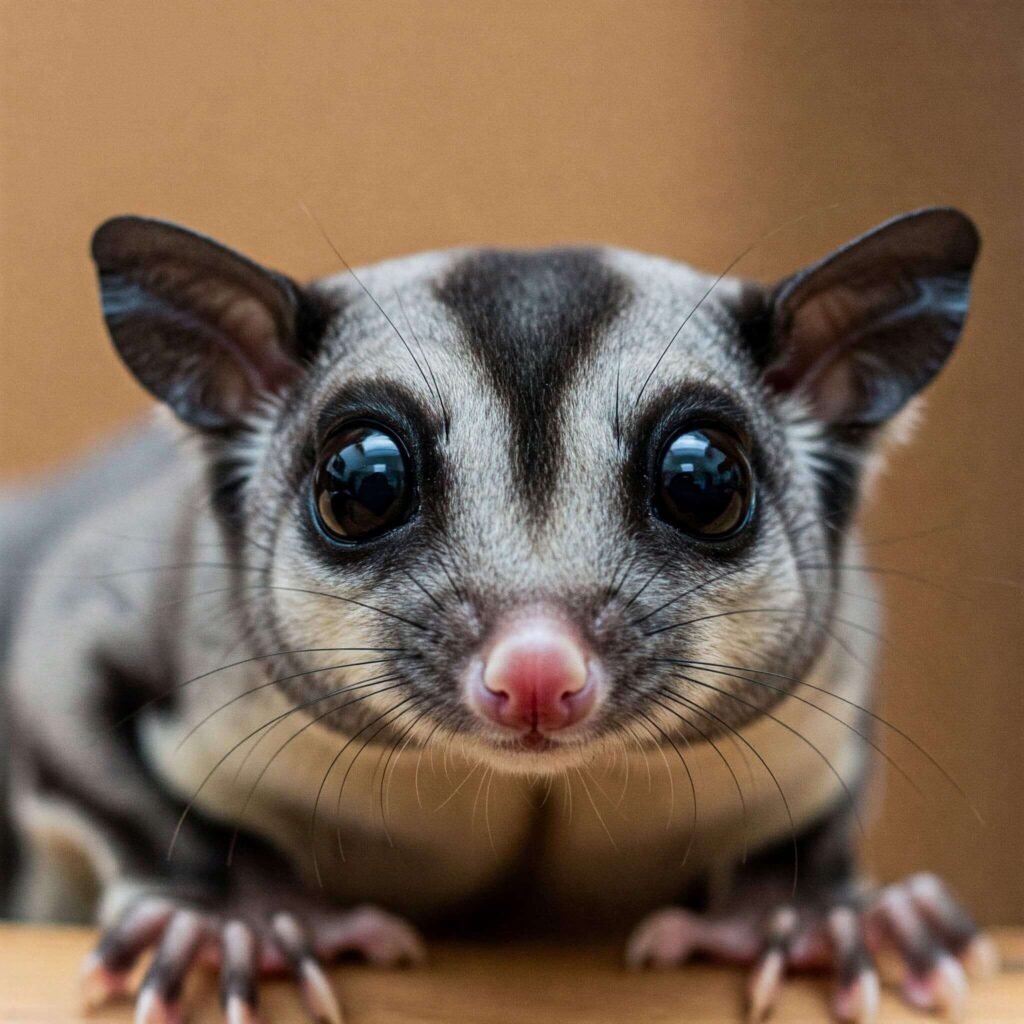Thinking about welcoming a tiny, gliding marsupial into your home? Should you get a sugar glider? These captivating creatures, with their big, endearing eyes and fascinating gliding abilities, can be alluring pets. But before you’re swept away by their charm, it’s crucial to understand the realities of sugar glider ownership. As an experienced blogger who’s delved into countless pet ownership journeys, I’m here to provide a balanced perspective, exploring the pros, cons, and sharing real-life stories to help you make an informed decision.
The Allure of Sugar Gliders: Pros of Sugar Glider Ownership
There’s no denying the unique appeal of sugar gliders. Here are some reasons why people are drawn to these fascinating creatures:
- Unique and Engaging: Their nocturnal nature and gliding abilities make them incredibly interesting to observe. Watching them leap and glide around their enclosure is a truly captivating experience.
- Potential for Bonding: With patience and proper handling, sugar gliders can form strong bonds with their owners, recognizing their scent and voice. Many owners report their gliders enjoying gentle handling and interaction.
- Relatively Small Space Requirements (Vertical): While they need a tall enclosure to accommodate their gliding, their ground footprint isn’t massive, making them suitable for smaller living spaces compared to some other exotic pets.
- Relatively Clean: Sugar gliders tend to designate specific areas in their enclosure for waste, making cleaning manageable.
- Quiet Companions (Mostly): While they do make some vocalizations, they are generally quieter than many other common household pets.

The Realities of Sugar Glider Ownership: Cons to Consider Before You Get a Sugar Glider
However, sugar glider ownership comes with significant responsibilities and potential challenges:
- Complex Care Requirements: Sugar gliders have specific dietary needs (a mix of fruits, vegetables, and protein, often requiring careful balancing), temperature and humidity requirements, and the need for a large, enriched enclosure.
- Nocturnal Lifestyle: Their active hours are at night, which might mean less interaction during the day when you’re awake.
- Social Animals Requiring Companionship: Sugar gliders are highly social and thrive in pairs or groups. Keeping a single glider can lead to loneliness and depression. This doubles the cost and commitment.
- Outbound Link: Consider linking to a reputable resource on sugar glider social behavior, like a specialized breeder’s website or an exotic pet veterinarian’s page.
- Can Be Expensive: The initial cost of purchasing sugar gliders (especially in pairs), their large enclosure, specialized diet, and potential vet bills can add up significantly.
- Require Specialized Veterinary Care: Not all veterinarians are experienced with exotic pets like sugar gliders. Finding a knowledgeable vet is crucial and can sometimes be challenging or expensive.
- Outbound Link: Link to a directory of exotic pet veterinarians in your region or a national association of exotic animal vets.
- Can Be Noisy at Night: While generally quiet during the day, their nocturnal activity can involve vocalizations and the sounds of them moving around their enclosure, which might be disruptive to light sleepers.
- Messy Eaters: They can be messy eaters, flinging food around their enclosure.
- Not Ideal for Young Children: Their delicate nature and specific handling requirements make them unsuitable pets for young children who may not understand their needs.
- Legality: In some areas, owning sugar gliders is restricted or illegal. It’s crucial to check your local regulations before considering getting one.

Real-Life Stories: What It’s Really Like to Live with Sugar Gliders
To give you a more personal insight, let’s look at some real-life experiences from sugar glider owners:
- Sarah’s Story: “When I first got Pip and Luna, I was amazed by their playful nature at night. It took time and patience, but now they happily climb onto my hand for treats. However, the diet preparation can be time-consuming, and finding a reliable exotic vet nearby was a challenge.”
- Mark’s Experience: “Keeping a pair of sugar gliders is definitely more work than I initially anticipated. Their large cage takes up a significant amount of space, and their nocturnal chirps sometimes wake me up. But seeing them groom each other and glide together makes it all worthwhile. They are truly unique pets.”
- Emily’s Insight: “I underestimated the importance of their social needs. When I initially had just one glider, he seemed lethargic. Once I got him a companion, his personality blossomed. If you’re considering should you get a sugar glider, be prepared to get at least two.”
[Placeholder for Image: Sugar gliders interacting with their owner’s hand, perhaps taking a treat.]
Making the Decision: Should You Get a Sugar Glider?
Ultimately, the decision of should you get a sugar glider is a personal one that requires careful consideration of your lifestyle, resources, and commitment level. They are not low-maintenance pets and demand significant time, attention, and financial investment.
Key Questions to Ask Yourself:
- Are you prepared for a nocturnal pet with specific care needs?
- Can you commit to providing a large and enriched enclosure?
- Are you willing and able to provide a varied and balanced diet?
- Can you afford the initial and ongoing costs, including potential vet bills?
- Are you prepared to keep at least two sugar gliders?
- Do you have access to a veterinarian experienced with exotic pets?
- Are sugar gliders legal to own in your area?
If you can honestly answer “yes” to these questions and are prepared for the unique challenges and rewards of sugar glider ownership, then these fascinating creatures might be the right pet for you. However, thorough research and realistic expectations are paramount before taking the plunge.


